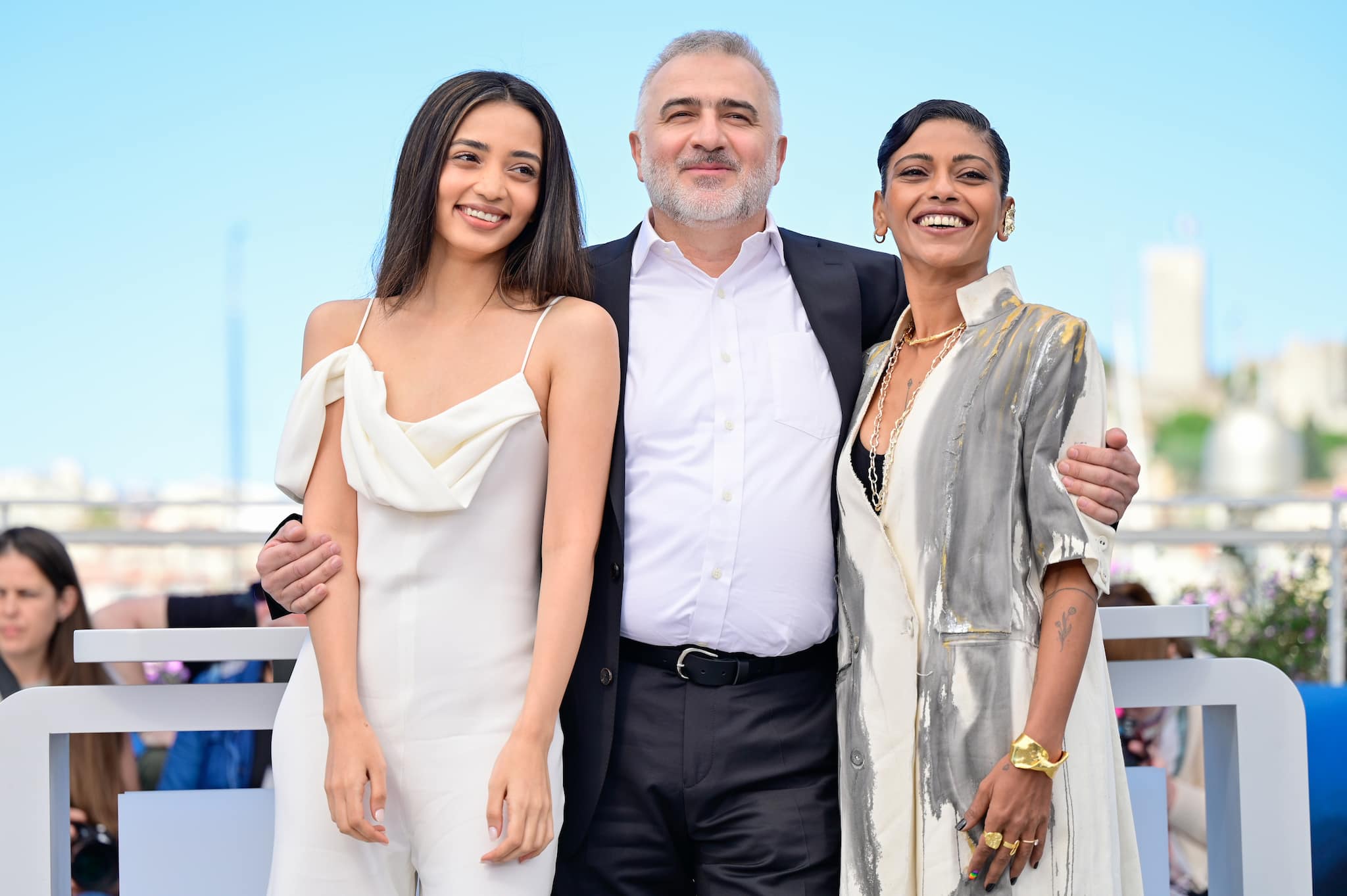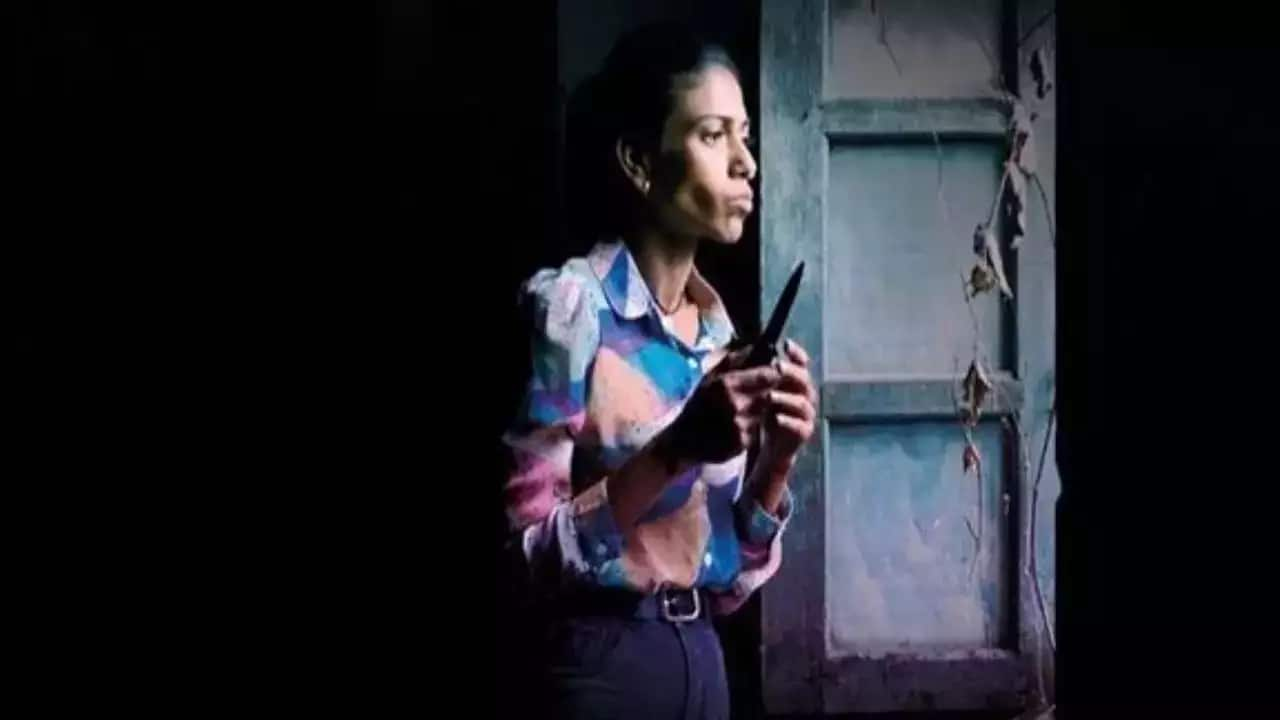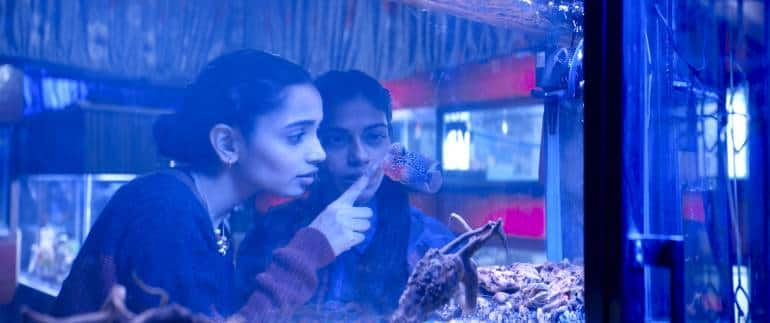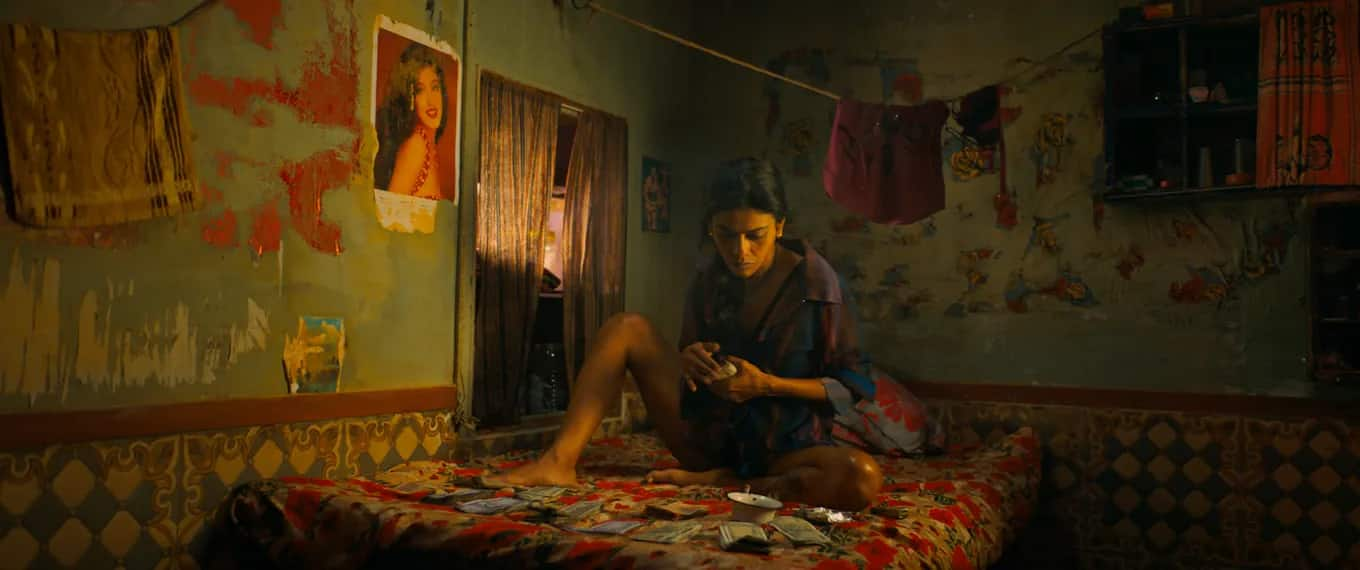



One of the most peculiar things about this film is that it’s a Hindi movie made by a Bulgarian director who doesn’t know Hindi, says Anasuya Sengupta, one of the leads in Konstantin Bojanov’s film The Shameless, which premiered at the 77th Cannes Film Festival, in the Un Certain Regard category, alongside British Indian Sandhya Suri-directed Shahana Goswami-starrer Santosh, among others. Sengupta has created history by becoming the first Indian actor to win Cannes' Un Certain Regard Best Performance award. Prior to this, Baby Naaz had received Special Mention (child actress) for her work in Boot Polish by Prakash Aurora in 1955.
Steering Shameless is a host of power-packed actors, including Mita Vashisht, Auroshika Dey, Tanmay Dhanania and Rohit Kokate, and helmed by Anasuya Sengupta and Omara Shetty as two accidental lovers, Devika and Renuka, respectively, both condemned to a living hell of sex work in a set that was built from scratch in Nepal, because production costs in India was too high. Anasuya’s feisty, unchanging Renuka is a stark contrast to Omara’s timid, diffident, vulnerable, resilient Devika, who’s seeking change. If Renuka has not breathed freely in a world outside of brothels, Devika hasn’t seen the sunlight outside her inferno-like home, which nudges at an era of Devadasis and the culture of prostitution. While both are doomed to the same fate and profession, there is power dynamics between the devadasis and street sex workers.
ALSO READ: Cannes 2024: Why Bulgarian director Konstantin Bojanov made an Indian film 'The Shameless', which premiered in Un Certain RegardThe meeting of Anasuya, from Eastern India, and Omara, from western India, was, perhaps, predestined. Both had similar beginnings if not the same. Anasuya, an “out and out” Calcutta girl, a La Martinière student who went on to major in English literature from Jadavpur University and dabble in theatre at a young people’s theatre group Tin Can — where she made lifelong friends, one of whom, Tanmay Dhanania, she’d share a house in Goa and cat Mowgli with years later, and also co-star in The Shameless. Around that time, Bengali director Anjan Dutt (who’s acted in Mrinal Sen films Kharij and Antareen) approached Tin Can to make his rock musical Madly Bangalee (2009) and cast a group of young actors including Anasuya.
As most English Honours majors presume to a fault, Anasuya thought she’s destined to be a writer, she tried journalism at the Kolkata-based, now-defunct, Kindle Magazine. Her stint didn’t last because an Australian film shooting came to town. She grabbed at the chance of being a director’s assistant for Claire McCarthy’s, The Waiting City, in 2008. Unbeknownst of what the job entailed, she was told by her friend, the Bengali actor-producer Tanaji Dasgupta, “a DA is basically a PA with a lot more scope”.
In 2009, Anasuya moved to Bombay, where her brother was working in films (Abhishek Sengupta was an AD on Sujoy Ghosh’s Kahaani, 2012, and directed the Prime Video series Laakhon Mein Ek, 2017). Acting gigs didn’t come her way, Bollywood demanded conventional beauty and actors like her tend to get “easily slotted as unconventional or alternative, you get put into that box…it’s a little bit less now,” says Anasuya, adding, “In that unconventional slot, there are brilliant actresses whom I both know closely and from afar, my role models are Konkona (Sensharma) and Tillotama (Shome). Tillotama is also a very dear friend, she’s like a big sister, and she’s such a brilliant actor who had to cut through a lot of the ‘industry’ shit and convention. She should have been carrying films on her shoulders for 20 years ago, you know? But for a film crew, to work behind the scenes, it is very much accepting of outsiders like me. I don’t think there is any place quite like Bombay, which is truly cosmopolitan in its design, in its industry, it’s infectious. It also teaches you that you’re not special, you’re just like everybody else. And it’s humbling and essential. I was grateful for that lesson.”
Anasuya started working in films’ art department and transitioned into a production designer, with such Netflix shows/films in her kitty as Masaba Masaba Season One, Srijit Mukherji’s film as part of the RAY (2021) anthology, the film Noblemen (2019), and Q, or Qaushiq Mukherjee’s film, Brahman Naman (2016), starring Dhanania and Shashank Arora (Titli, Made in Heaven). In Masaba Masaba, she was put in a scene for a fraction of a moment, but she was noticed, at least in her circles. “I’ve not done very prime Bollywood work, I had a lot of film school friends, so it opened up another kind of a space of work.” She’s worked on director Ruchir Arun’s National Award-winning diploma film Mandrake! Mandrake! (2013) and was in one of the playback exercises in an FTII film of Payal Kapadia, whose latest film All We Imagine as Light has broken India’s Palme d’Or 30-year jinx.
With many a web-series on her plate, her production design career seemed quite solidified until, say, four-five years ago, when she started feeling a certain emptiness, of creative self-fulfillment, which was “confusing and hurtful”. She took to art and illustrations, “which helped me decode what I was missing personally in production design”.
 (From left) Omara Shetty, Konstantin Bojanov and Anasuya Sengupta at the 77th Cannes Film Festival. (Photo: Instagram/Getty Images)ALSO READ: Cannes 2024: How Katrina Kaif-starrer 'Phone Bhoot' actor Omara Shetty went to Cannes with her lesbian love story 'The Shameless'
(From left) Omara Shetty, Konstantin Bojanov and Anasuya Sengupta at the 77th Cannes Film Festival. (Photo: Instagram/Getty Images)ALSO READ: Cannes 2024: How Katrina Kaif-starrer 'Phone Bhoot' actor Omara Shetty went to Cannes with her lesbian love story 'The Shameless'Around that time came Konstantin Bojanov in her life like a divine intervention, which Anasuya calls a “smack out of the blue”. Konstantin, who has shot in Calcutta previously, had common friends with Anasuya and was her Facebook friend, liking each of her illustration posts. He dropped her a message on Facebook messenger in 2020, asking Anasuya whether she’d play one of the leads in his next film. That completely threw her off. She hadn’t acted in 15 years and didn’t knew if she had any acting chops left in her. She took about a month to respond to him in the affirmative. Only much later at the Nepal airport, did Konstantin tell her that he was sussing her art work because he wanted to make Shameless as an adult animation — the Bulgarians are known for their animation films — and was “frustrated that he couldn’t mount the film the way he wanted”. Producers for animations are hard to come by, especially in India. “It’s not an ordinary way of thinking for casting. I have not heard of a casting like this. It’s super unusual. I was with no casting agency, I was not being pushed by anyone but I’m glad it worked out that way.”
She geeked out to prepare for her role as Renuka in The Shameless. “A character like her, it was a great deal of mental and physical prep because…and I’m lucky that Konstantin gave me the liberty to visually design my character. The styling came later and we had an amazing costume designer and production designer in Parul Sondh.
 A still from 'The Shameless'. (Photo courtesy Urban Factory)
A still from 'The Shameless'. (Photo courtesy Urban Factory)But I’d introspect on whether “Renuka should be gaunt or not. I realised that she’s a street hooker and has grown up on the streets. She’s a survivor. She probably doesn’t even do two square meals a day. So, physically, I focused a lot on looking lean and gaunt but not weak. I also had to look strong and powerful,” says Anasuya, who has trained extensively in martial arts, just like how Omara has trained in kalarippayattu.
 A still from 'The Shameless'. (Photo courtesy Urban Factory)
A still from 'The Shameless'. (Photo courtesy Urban Factory)In the lead up to the film, Anasuya called her martial arts trainer to train again for the role. “But it’s not an action film,” enquired her flummoxed trainer. Her character Renuka is not a warrior, she’s not fighting physically in the film, but the role demanded physical discipline.
“Martial arts is so grounding and helps you harness your energy. It’s very rudimentary but it’s very beneficial for performance arts. Besides, I was running a lot, 2-3 km every day for over two months. And I loved filming in Kathmandu’s backpackers’ district Thamel because there was a lot of walking. Again, I didn’t prep-run because I had extensive running scenes in the film, but somewhere it was also a mindset work for me, to truthfully represent Renuka rather than act as Renuka,” says Anasuya of her character who, in the film, is on the run. Renuka is a lone wolf kind of a persona. “I kept to myself a lot. Listened to a lot of drum and bass to channel the inner chaos and that survivor spirit. Omara has all these people in her life, the mother and the grandmother and I have one altercation here and there with these characters. Tanmay is the only other actor that I have scenes with. Because that’s the story. The only person in Renuka's life as such is Devika,” says Anasuya, who has one regret, she didn’t get any scenes with the “glorious” Mita Vashisht.
For her intimate scenes with Omara, “there was an intimacy coordinator from Nepal, Akanchha who’s an absolutely amazing woman and an actress herself. We had multiple meetings with her and had spoken to Konstantine extensively,” says Anasuya, “We had the intimacy coordinator on the very first day of filming, so it was very scary. The cinematographer was male, the director was male, but they took extreme care to keep the set only women, except when absolutely someone needs to come in to check a frame or whatever. There were many women in the crew.”
“I don’t want to think about if they are shooting my back while there’s a scene where Devika is cleaning me, and that was the first day of filming. And they filmed my back. It involved a lot of trials of body taping, and I had the costume team come to my hotel room for the prep. Konstantin was chopping off things that he felt was not necessary at every level. I remember an initial draft which had the two women naked while making out, but by the time we did it, we didn’t have to. What I personally found very beautiful was every time we had difficult scenes to do with intimacy, there was a very beautiful bond I shared with Omara and that played out, just the two of us huddling together and we didn’t even have to say anything to each other, but I knew we are a unit. Again, at the script level, in a scene when Tanmay’s Murad returns to the safe house where he left Renuka only to find her in a devastating state, Renuka’s clothes were off, but again by the time we did the scene, only my trousers were off.”
 A still from 'The Shameless'. (Photo courtesy Urban Factory)ALSO READ: Exclusive: 'Scoop' actor Tanmay Dhanania on his Cannes' Un Certain Regard film 'The Shameless', independent cinema and Bollywood monopoly
A still from 'The Shameless'. (Photo courtesy Urban Factory)ALSO READ: Exclusive: 'Scoop' actor Tanmay Dhanania on his Cannes' Un Certain Regard film 'The Shameless', independent cinema and Bollywood monopoly“No matter what is happening in the story, the heart of the film is Renuka and Devika’s love. And that is the only light in the film, it is the light of the film,” she adds, “I knew we had a lot of difficult scenes. I definitely had concerns, and also specific to Omara. Even in real life, I am the older one among us. So expectably, as the younger one, she was probably naiver, more vulnerable. I had apprehensions in how to make her comfortable while also doing due justice to my performance, which was a little bit tricky, because in Renuka’s character, there’s a certain brashness to her, while these were moments of tenderness. I was scared that I didn’t come on strong. Our dynamics in the film is so delicate that the best way to really get it right was to solidify the trust on the floor. As an actor, we build together.”
To prep for her role, Anasuya “watched a lot of films and hard-hitting documentaries, about heroin addicts, etc. How it’s ‘power’ and the powerful who puts this stuff on the street and it’s the lowest rung, the sex workers, homeless people, petty criminals who take to it. Through those films I tried to understand what becomes of these people. They are the unsung heroes in so many ways.”
 A still from 'The Shameless'. (Photo courtesy Urban Factory)
A still from 'The Shameless'. (Photo courtesy Urban Factory)“Shame and guilt, I find that these two emotions as the most unfruitful for us human beings, for everyone to feel, and they block us. You know, the minute you’re ashamed, embarrassed or guilty, you can’t move forward. This constant shame blocks people’s growth, particularly of women. To be shameless is actually a more productive approach. Renuka is absolutely shameless. There’s the same shamelessness even in Devika, which you won’t expect. Renuka kind of liberates Devika in a way, by fiercely being herself, she ends up being that sort of a role model for a closeted girl like Devika, for her to really become shameless and do what she feels she should do.”
“Especially this year, not only The Shameless, the films that are there in selection — I wish these divisions were not there, but they exist — are not your hardcore mainstream films. Personally, it feels very special, it’s a starting point for me. I feel absolutely humbled and very lucky. We have all worked very, very hard to mount a small film. The Cannes selection has rekindled something that I’d suppressed, buried deep down. I am now here to act. I want to act more. I want to play as many different, diverse roles. And at the larger level, I feel it’s very, very encouraging for indie films, for someone like me, who is a nobody for all practical purposes, but the fact that we can make films, we can do good work and we can leave the whole hustle of Bollywood, because Indian cinema is so much more than Bollywood, and whether it’s Tanmay (Dhanania), or Kani (Kusruti, who is one of the leads Payal Kapadia’s film), she’s also Goa-based, pushing films when you are not in Bombay, there’s something frightening about it, so, this (Cannes selection) is like a pat on the back,” says Anasuya, who wore the indigenous Kolkata brand Bobo Calcutta to the Cannes red carpet.
 Anasuya Sengupta on Cannes red carpet in a Bobo Calcutta gown.
Anasuya Sengupta on Cannes red carpet in a Bobo Calcutta gown. Discover the latest Business News, Sensex, and Nifty updates. Obtain Personal Finance insights, tax queries, and expert opinions on Moneycontrol or download the Moneycontrol App to stay updated!
Find the best of Al News in one place, specially curated for you every weekend.
Stay on top of the latest tech trends and biggest startup news.